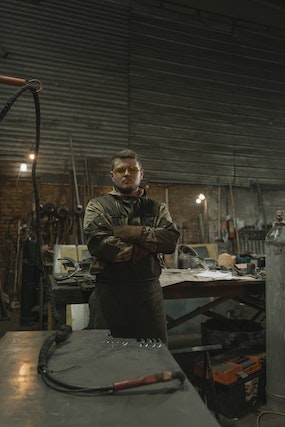Even though they are obligated to shoe and balance a horse according to scientific principles, farriers are artists who deal with live canvases. The farrier has to have a firm grasp of biomechanics, physiology, break over, “airtime,” and confirmation in order to craft a hoof that is both attractive and well-balanced. Both your practical experience and your theoretical knowledge need to be on point for you to be a great farrier.
When issues emerge, a productive relationship between the farrier, the owner, and the veterinarian may be able to flourish if the farrier maintains an open mind. When addressing a foot problem with blacksmith supplies, farriers have a responsibility to accept whatever limits they may have. To make lame horses healthy again and keep sound horses from becoming lame, experienced farriers and veterinarians must work together, learn from their mistakes, and learn from the experiences of other horses that have gone lame in the past.

The farrier is also a skilled equestrian. Farriers who have experience in riding and training have a leg up over non-riding farriers since they comprehend the terms that are used when a rider or trainer talks to them about a gait issue and whenever “something just isn’t right.” This gives them an advantage over farriers who do not have riding and training backgrounds. The “feel” that is employed when being on a horse is formed through experience, with many hours on the saddle. This “feel” can be important when attempting to remedy a problem related to the horse’s gait.
The benefits of having a farrier who also rides are straightforward: they understand what the rider wants because they have experienced it for themselves, they know the anguish that comes from having an equine partner that is unable to deliver its best, and they have the same sense of satisfaction that comes from resolving issues and accomplishing goals.
Be wary of farriers who believe that their perspective on what constitutes great shoeing is better than that of other farriers. This way of thinking is not only unjust but also potentially quite hazardous. For example, it can be a red flag when farriers routinely clip heels too low. These farriers intend to cut the foot down to the broadest area of the hoof in order to accommodate an exceptionally enormous shoe. The horse will have low heels, lengthy toes, and improper angles as a result of this process. The horse begins to show signs of tiredness early in the ride, which can cause anomalies in gait as well as pain in the heel.

When it comes to getting work done on their horses, the owner of the horse should have the same level of confidence in the farrier as they have in the veterinarian. Farriers who are skilled in their craft are popular wherever there are horses; those who are ready to connect with horse owners and veterinarians, appreciate the work that they do, and are eager to put the horse’s welfare first have a promising career ahead of them.They ought to be able to imprint their own unique style on the job they do and, with the sensibility of an artist, construct a hoof that is beautiful, balanced, and practical.





